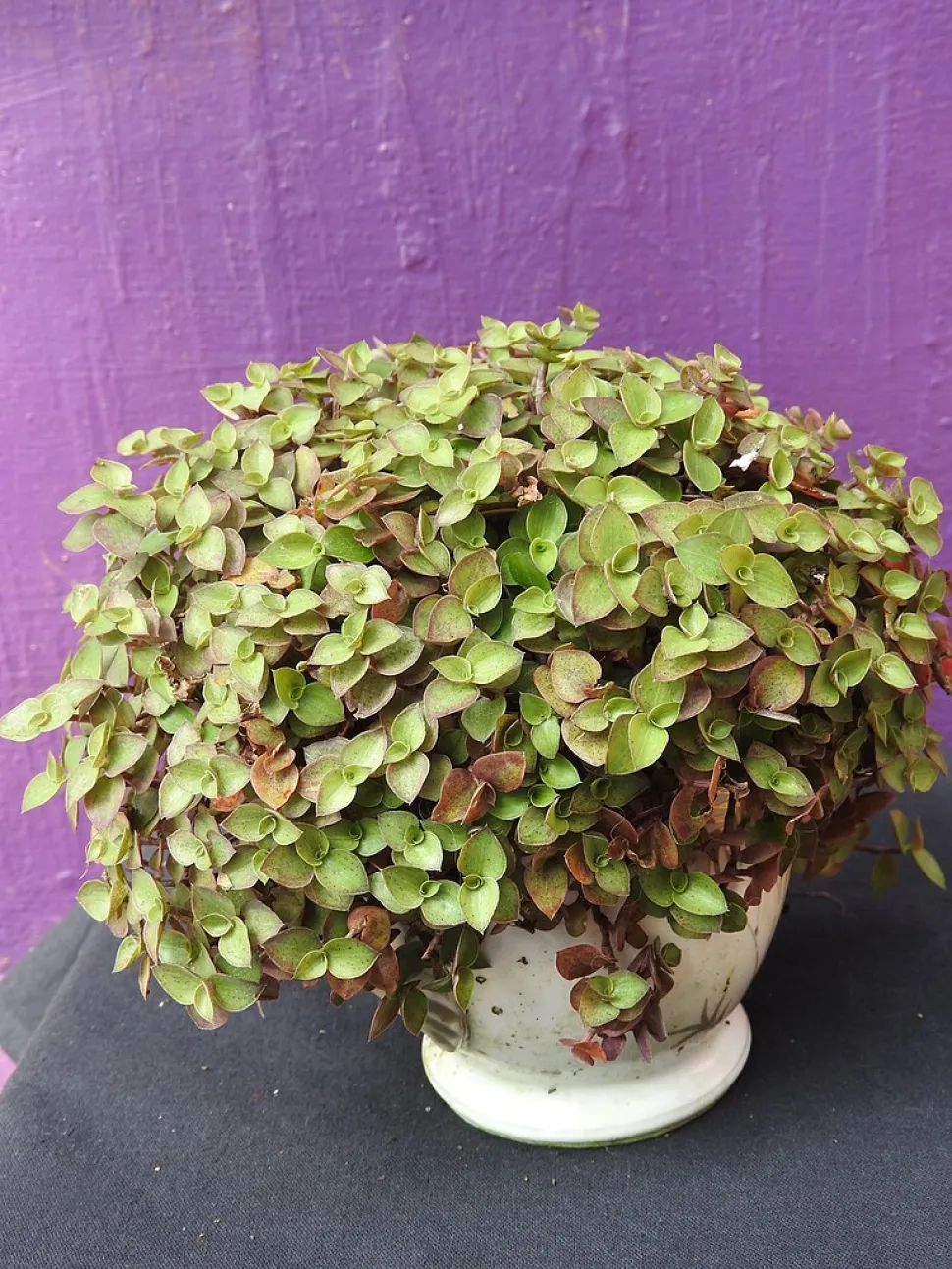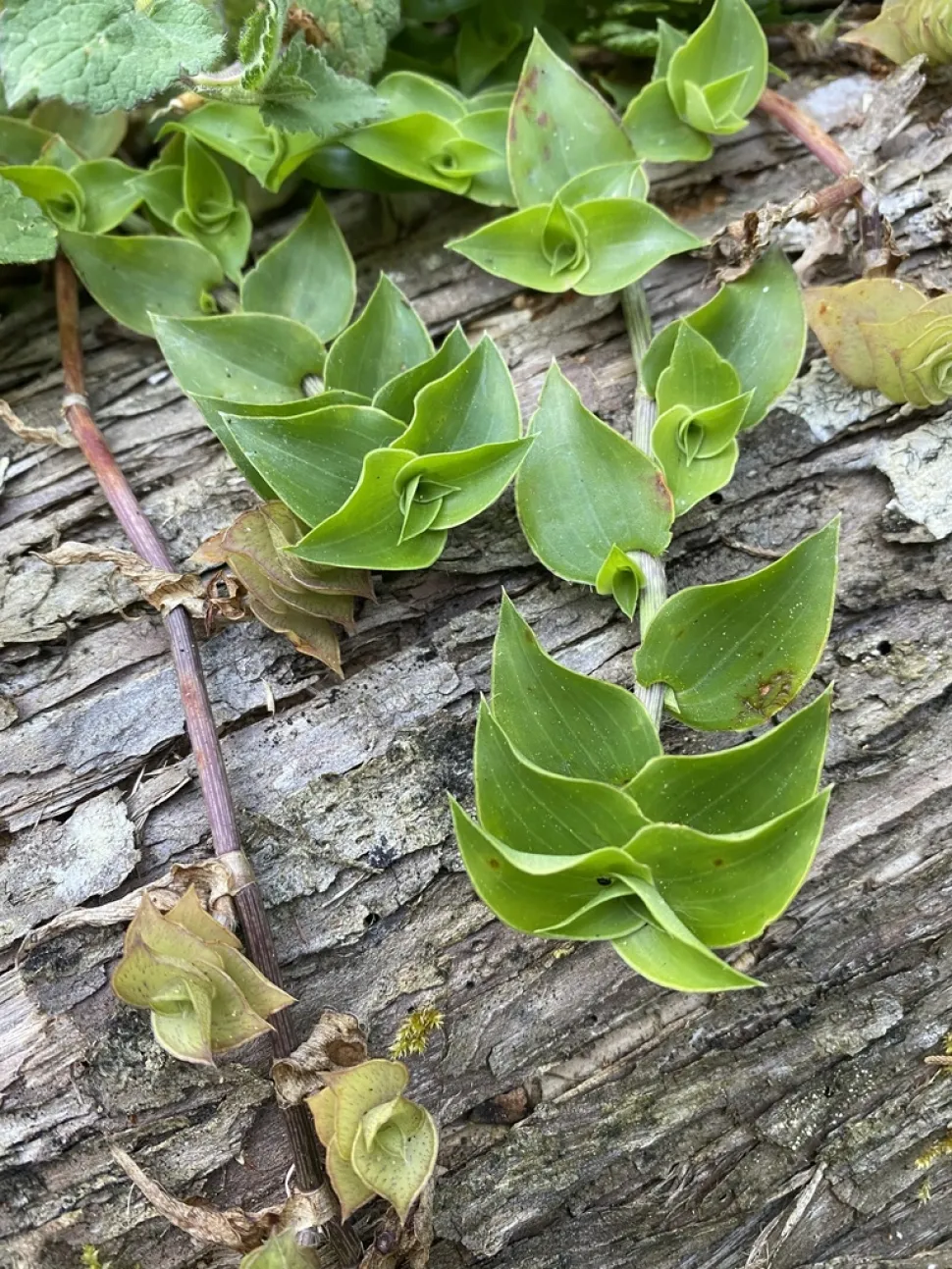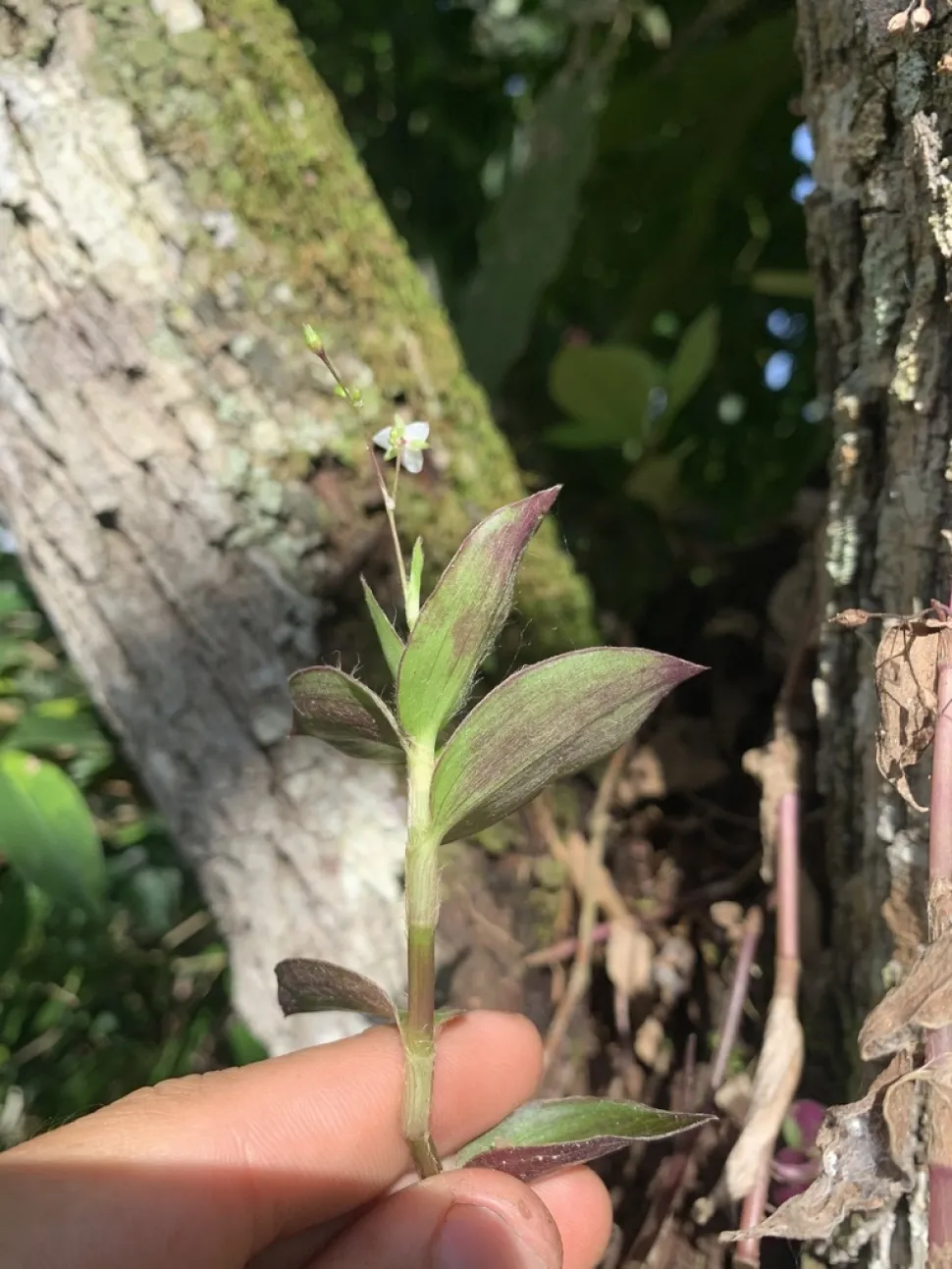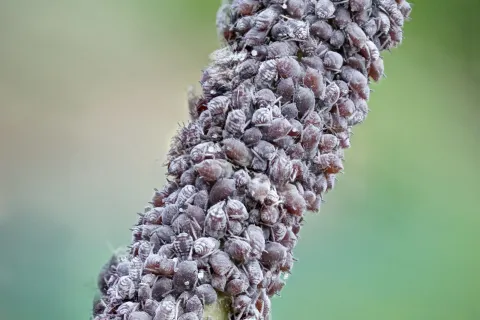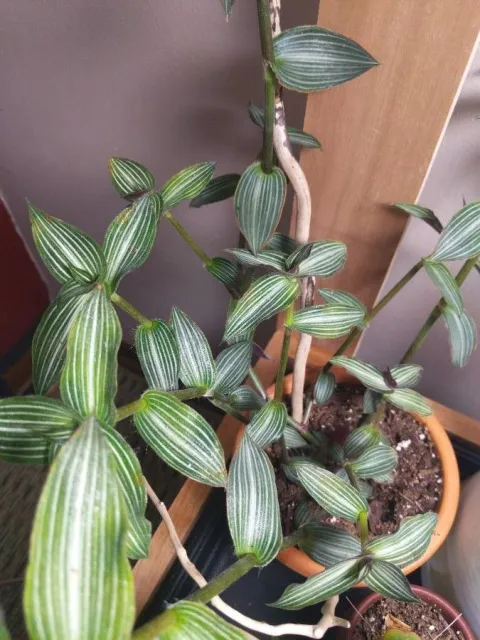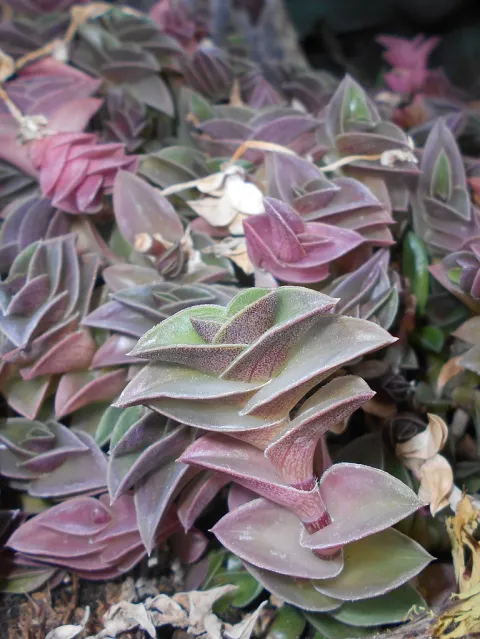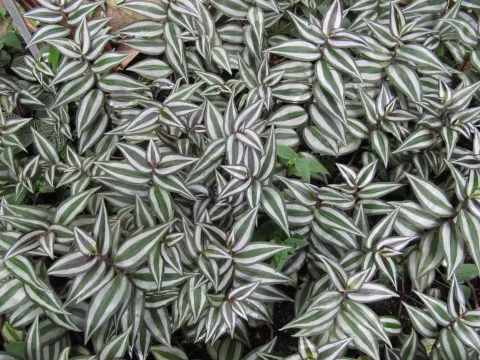Callisia repens, a delicious succulent
Callisia repens comes to us from the forests of South America. With its fleshy leaves that turn red in the sun, this fat plant of the Commelinaceae family is a feast for the eyes. And for the taste buds!
How to recognize Callisia repens?
Callisia repens, or creeping callis, is a succulent with a compact habit. It grows to no more than fifteen centimetres in height, but can reach a metre in spread. In the open ground, its nodes take root and the plant quickly forms a ground cover. In pots, it is grown in suspension.
Stems measure several dozen centimetres. They are fragile and break when handled carelessly. Purple, they remain visible beneath the alternate, sheathing leaves.
The fleshy, cordate blades are no more than four centimetres long. These are true chameleons! Acid green, they turn violet or red when the plant receives a lot of light. There are also cultivars with pink, purple or fuchsia foliage.
Callisia repens flowers from March to October, at the same time as callisia fragrans. It produces pairs of white, violet-scented flowers. But indoors, the phenomenon is much rarer.
Creeping callisia is non-toxic. Rich in calcium and mineral salts, it is even used as food for parakeets, turtles, chameleons and certain rodents.
Our maintenance tips
Callisia repens are robust and easy to care for. Be careful, however, when handling the plant. The stems are fragile and brittle. If you break one, don't panic. Just take cuttings!
Watering
Water your Creeping Callisia when the soil surface is at least three centimetres dry.
Use non-calcareous water at room temperature, such as rainwater.
After 20 minutes, empty the planter or saucer. Stagnant water can rot the roots.
Spray
Your Creeping Callisia loves humidity. But the air in our homes is often too dry! To remedy this, spray the foliage with non-calcareous water.
In addition to increasing humidity, misting dusts the leaves and limits pest attacks.
Repotting
Every spring, repot your Callisia repens to give it more space.
Choose a pierced container only slightly larger than the previous one. Opt for a ceramic or terracotta model: they promote evaporation and prevent moisture from lingering at the bottom. You can also place a bed of gravel or clay balls at the bottom of the pot.
Callisia repens cactus and succulents need a draining substrate, such as potting soil for cacti and succulents. Pour in a layer, plant your subject in the middle and fill in with potting soil. Pack gently to avoid damaging the root system.
After 30 days, the cutting has produced roots. You can repot it.
Once the first roots appear, you can transplant your stem with the mother plant, to densify it.
If you wish to create a new plant, prepare a perforated pot lined with a drainage layer (clay balls, gravel, pebbles). Then pour in potting soil for cacti and succulents. Make a pilot hole and plant your cutting. For a fuller specimen, you can place several stems in the pot. Water with non-calcareous water to facilitate rooting.
Fertilization
To promote the growth of your Callisia repens, apply fertilizer in spring and summer.
Apply a cactus and succulent fertilizer to support growth. Be sure to follow the manufacturer's recommended dosage to avoid damaging the foliage.
Prune
Remove dried or yellowed leaves.
Pinch
Pinch your Callisia repens during its growing season.
To give your plant a compact habit, pinch back young shoots. This improves branching.
Cutting
Cutting is carried out during the strong growth phase, generally in spring and early summer.
Using clean, sharp scissors, remove the tip of a branch. Remove a section at least fifteen centimetres long (five or six knots).
Immerse your stem in a glass of water at room temperature. Place the cutting in a sunny, draught-free spot. Remember to change the water to keep it clear.
When the roots are at least three centimetres long, you can repot your young shoot.
Diseases / Threats
Information
| Family | Commelinaceae - Commelinaceae |
| Type | Callisia - Callisia |
| Species | Creeping Callisia - Callisia repens |
| Lifecycle | Perennial |
| Foliage | Evergreen |
| Exposures | |
| Substrats | |
| Planting method |
In pots |
| Categories | |
| Tags |
Beginner Fritillary Increvable |
| Origin |
South America |
| Hardiness (USDA) | 11a |
| Leaf color |
|
| Flower color |
|
Discover plants from the same family
